The 2022-2023 cohort of the IMA Low Res program recently had a two-day show at NYU Shanghai on June 21 and June 22, 2023.
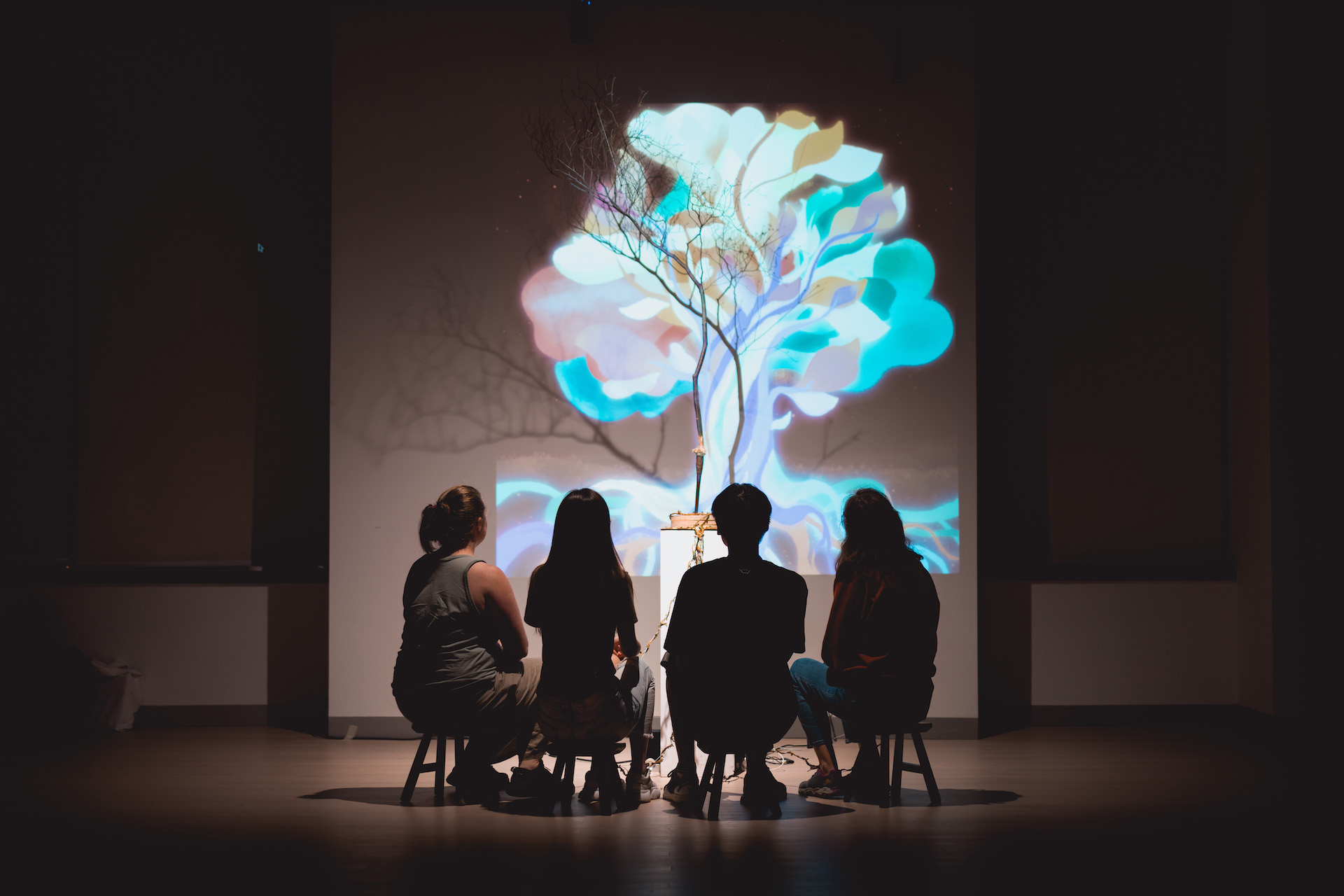
Jun Shu’s “ZHIFANYEMAO (枝繁叶茂)”, an interactive installation about the continuation of life and memories.
The Thesis ‘23 Show featured interactive media artworks created by students graduating this year from the IMA Low Res Masters program. They each demonstrated unique perspectives and methodologies, utilized an array of emerging technologies and tools, and invited visitors into immersive, diverse and thought-provoking experiences. The two-day show drew a large crowd that included local artists, technologists, gallerists, NYU alumni and the greater Shanghai community.
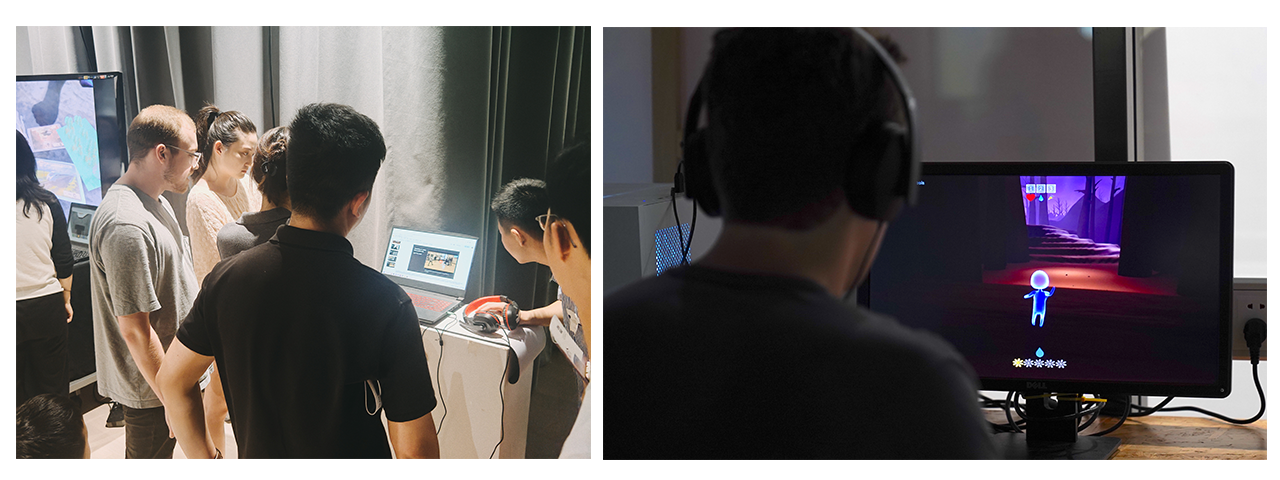
(left) Noah Dixon showing his “Interactive Theatre in the Digital Age” project to curious visitors. (right) Visitors playing Ai Xia’s “Before The Sun Rises”, a game where players work together as kindred spirits of the forest to help regrow a dying land.
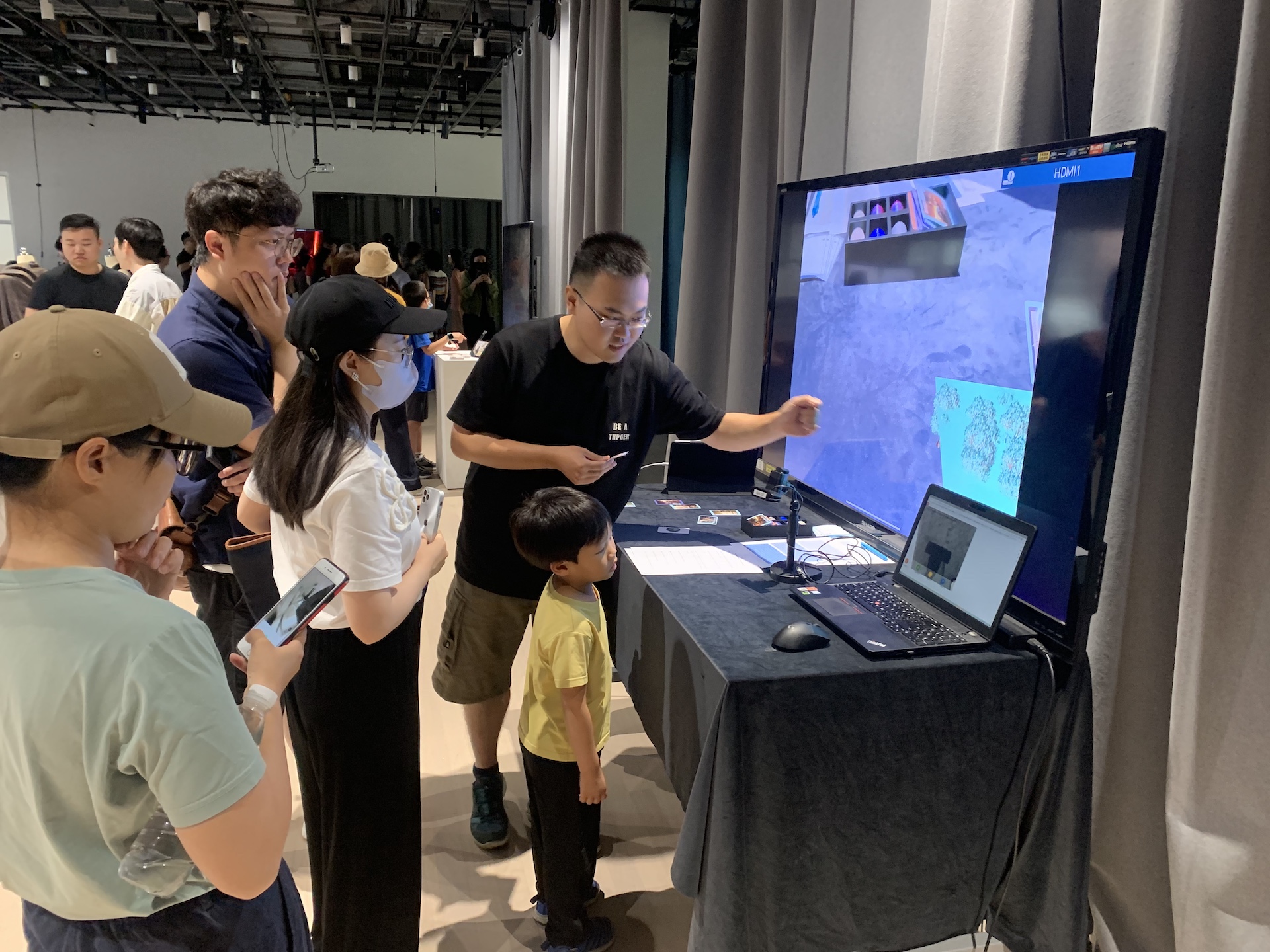
Wentao Wang showing “Futurecraft: A Collaborative World Building Game” to show visitors. The project uses AR to help players simulate potential global consequences of their decisions and explore how we might build a better future together.
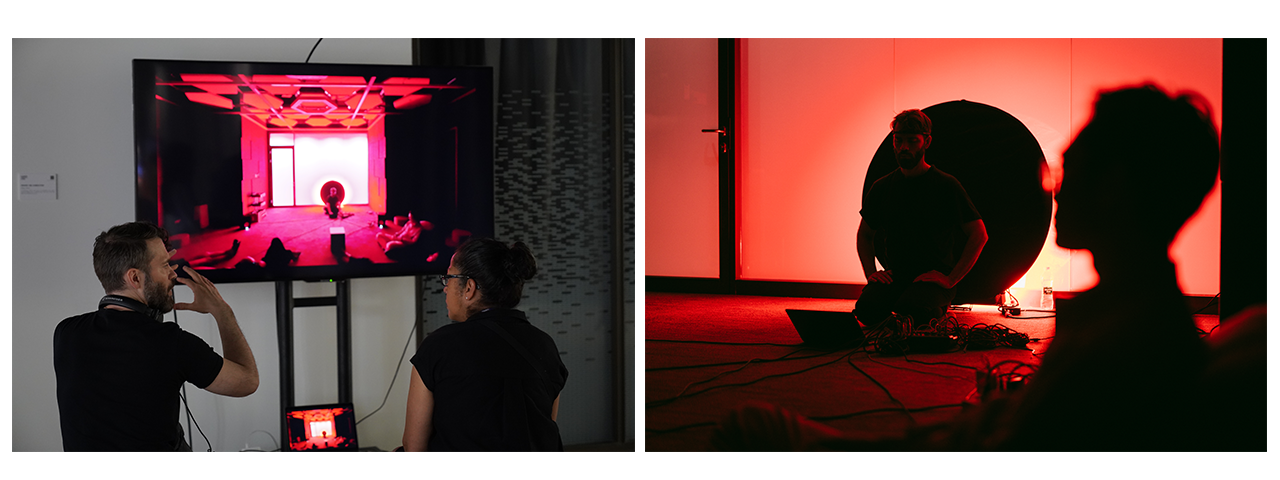
(left) Jason Snell explains his “Ecstasy and Dissolution” work to visitors; (right) a soundscape design and series of soundbaths that guide audience members into a waking dream state with real-time heart and brainwave activity.
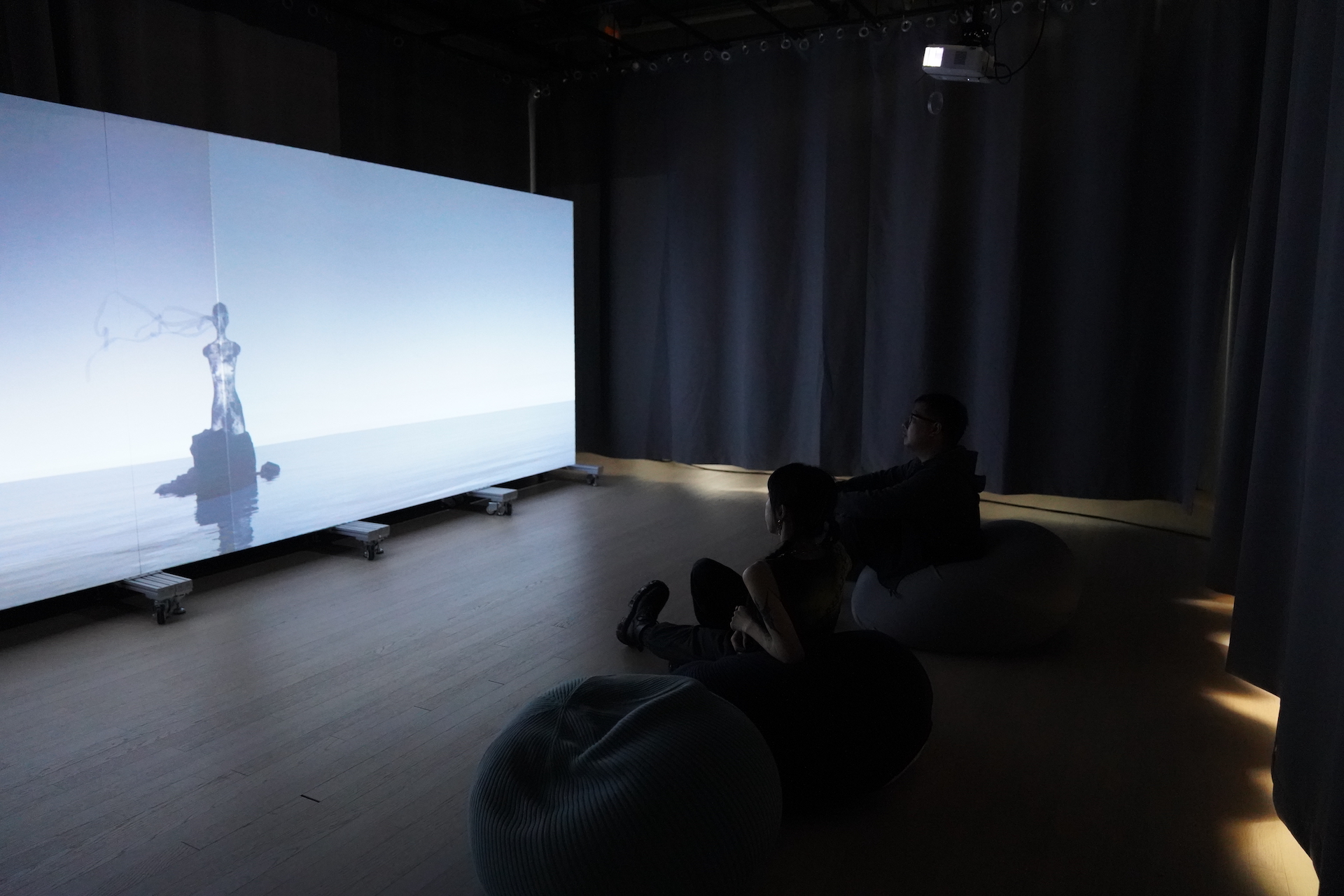
Show visitors watching Yiyang Cao’s “Excavating Eternal Beings - A Past Life Regression”, an audiovisual installation telling the story of the artist’s future incarnations based on a past life regression, exploring patterns throughout 9 possible lifetimes and continuing the artist’s own life journey informed by these relationships.
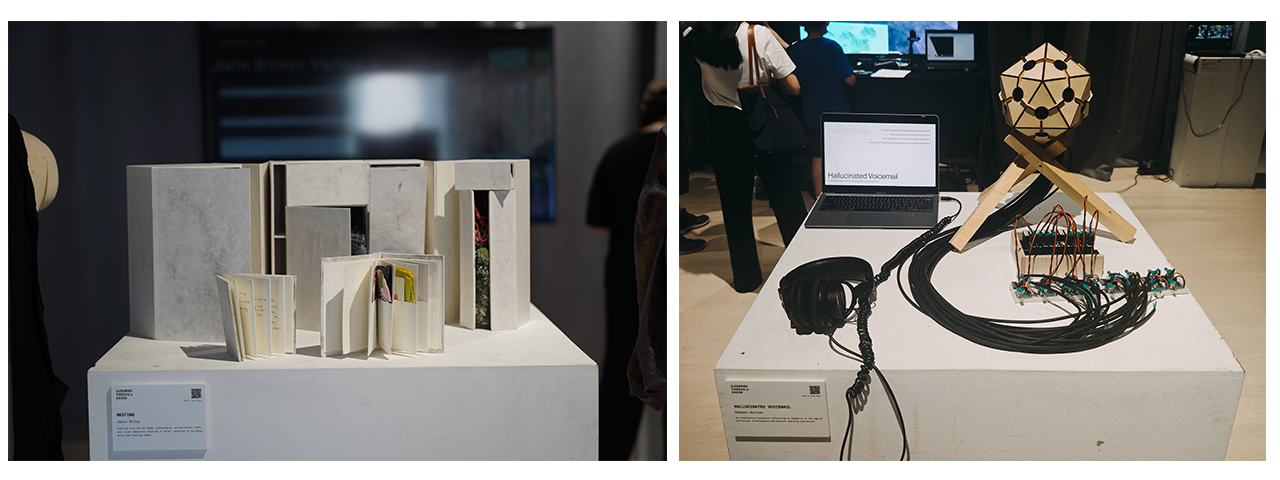
(left) Jamie McCoy’s “NESTING” project centered upon the non-human technologies and ritual behaviors of birds’ along with their practice of building nests and crafting homes. (right) Sehmon Burnam’s “Hallucinated Voicemail”, an interactive audio sculpture reflecting on humanity in the age of artificial intelligence and prevalent machine learning simulations.
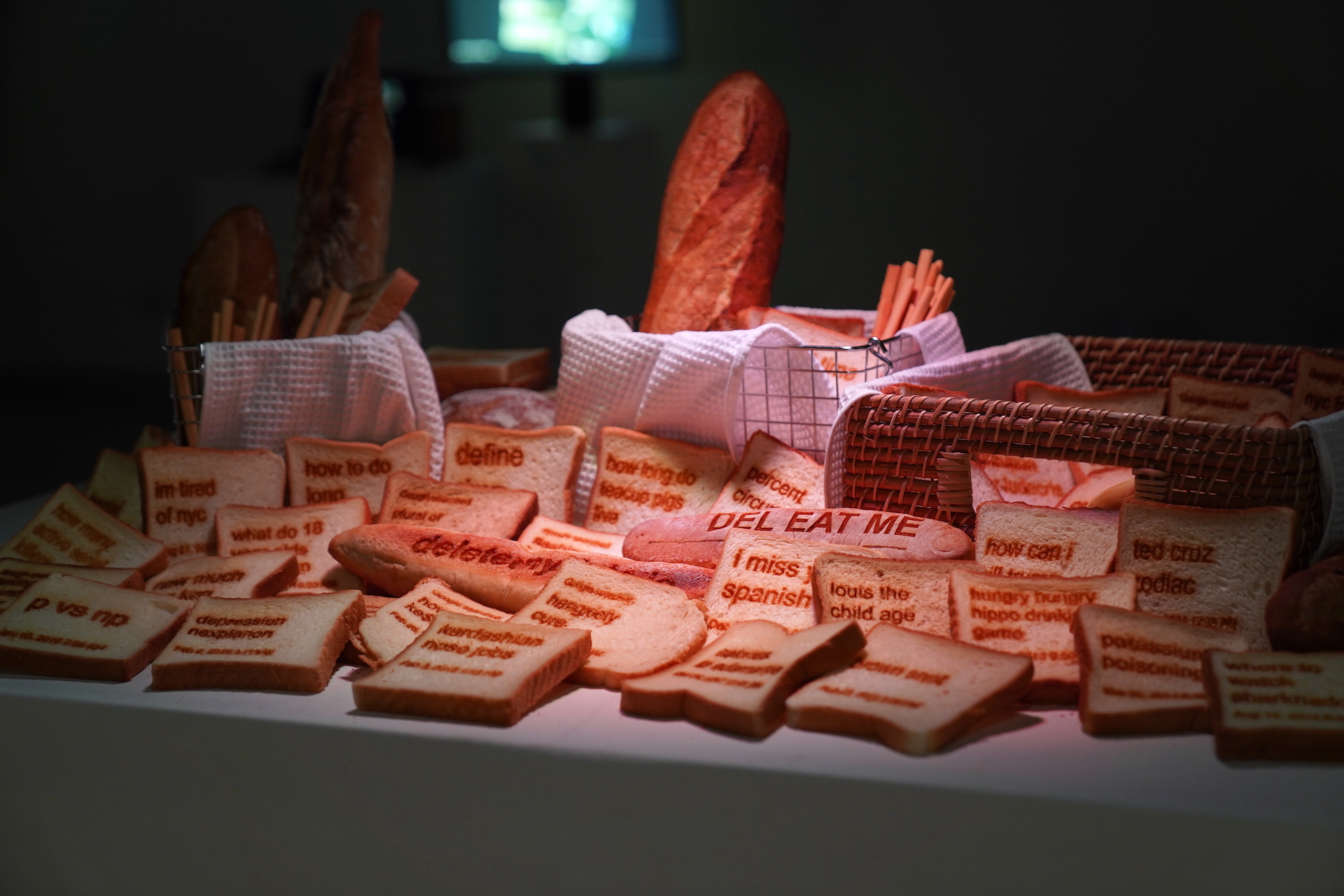
Zoe-Alanah Robert’s “DEL(EAT)ME”, an exploration into data collection, digital rights, and the catharsis of group destruction of personal data.
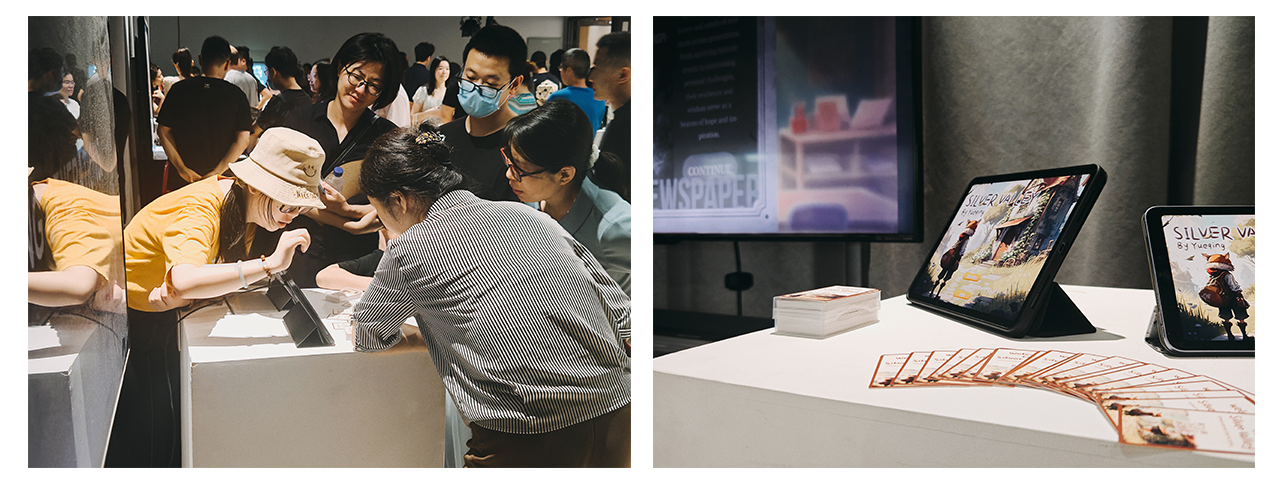
Yueqing Dai showing “Silver Valley'' to a group of show visitors. The project is an immersive application that merges in-game & after-game experiences with real stories based on interviews with elderly people aiming to foster intergenerational connections.
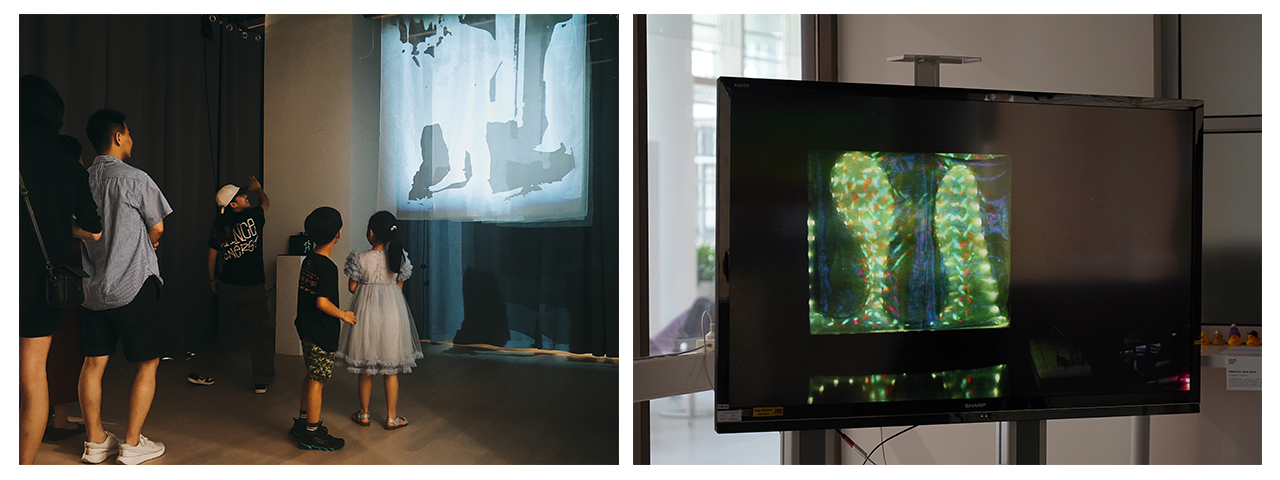
(left) Show visitors interacting with Ada Huang’s “BODY DOMAIN”, a multimedia installation that uses dance, computer vision and real-time projection to examine our bodies and sense of self. (right) Elizabeth Engelman’s “Perceptive Radio Waves”, a device that explores a ubiquitous, yet normally imperceptible phenomena that drives modern telecommunication.
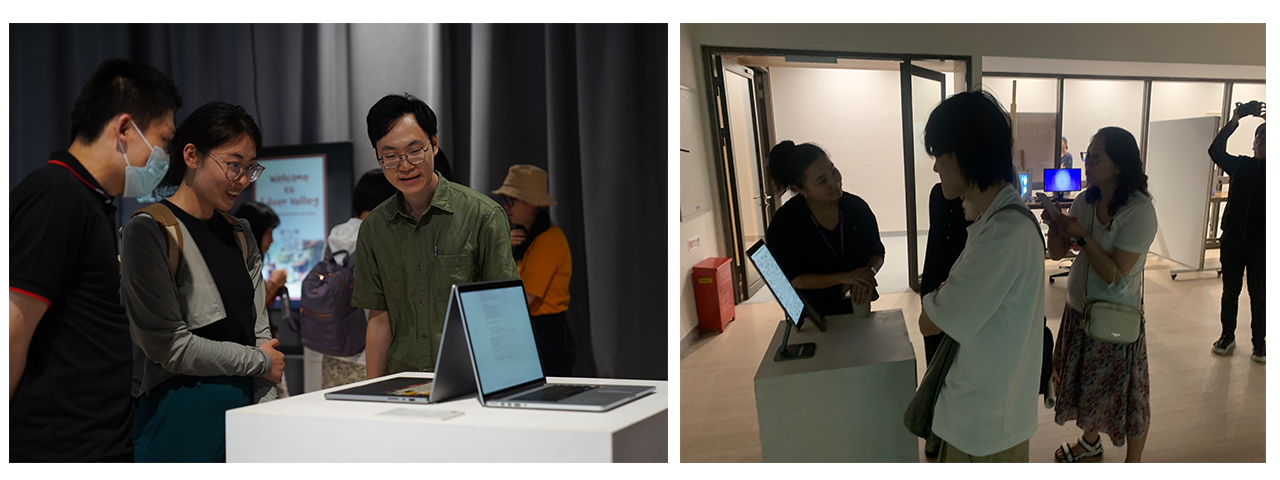
(left) Yugian Ma’s “Don’t Look At Me When I’m Coding”, an interactive installation that plays with the differences in behaviors between a human coder and an AI coder. (right) Yingyi Hu showing “The Wheel of Anxiety”, a web-based application driven by p5.js that addresses the pervasive and unavoidable anxiety we experience in life.
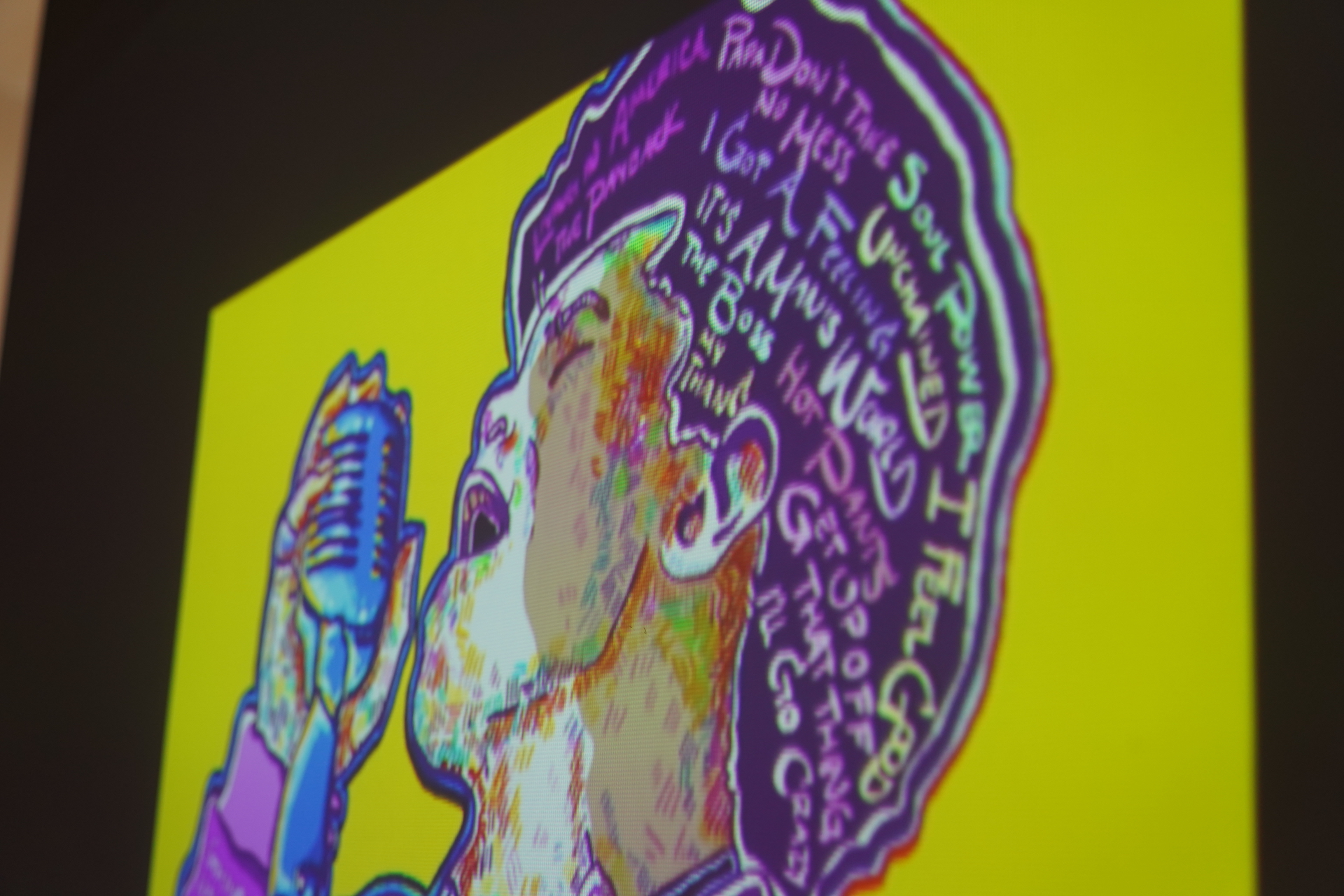
Chelsea Heard’s “Beyond the Spectrum”, an immersive installation that uses illustrations, audio, and chalk footsteps as a way to pay homage to the artist's grandparents as well as to honor significant African American figures and their contributions throughout history.
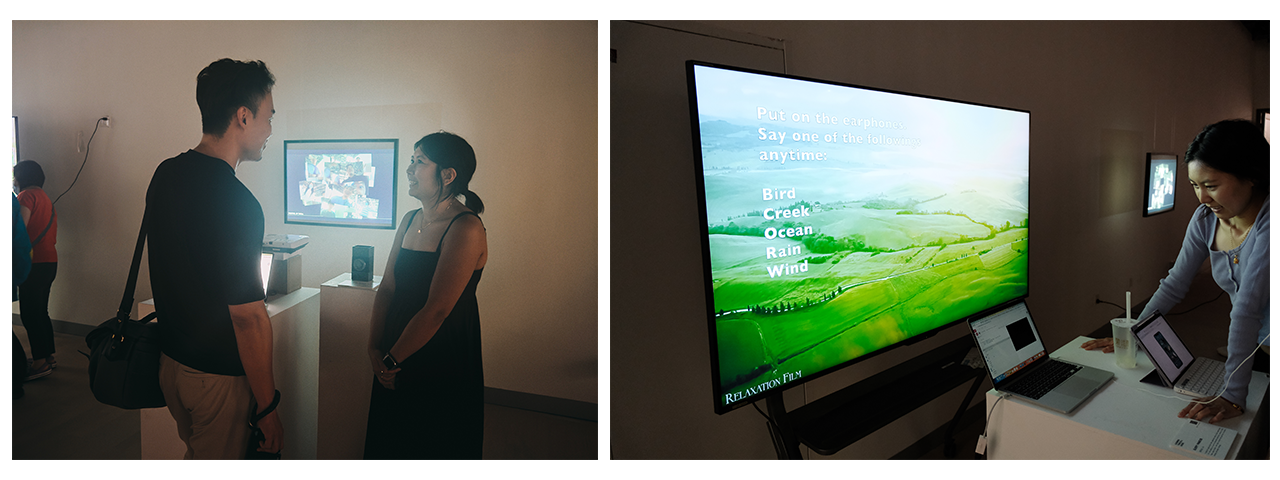
(left) Show visitor learning about Dora Do’s project, “Merging Worlds: Bridging Analog and Digital Photography”, a personally crafted 3D printed camera that blends the tactile charm of analog photography with discreet integrations of digital features. (right) Daisy Lu’s “Sleepy Paradise”, a digital application that provides accessible audio-visual experiences for the elderly.

(left) Visitor experiencing Renton Ling’s “Last Night Memory”, an interactive film that uses a multitude of storytelling methods to elicit both empathy and understanding. (right) Yunshan Jiang’s “KLESHAS”, a generative art project situated in a virtual ecological environment that visualizes and simulates negative emotions derived from Buddhist concepts.
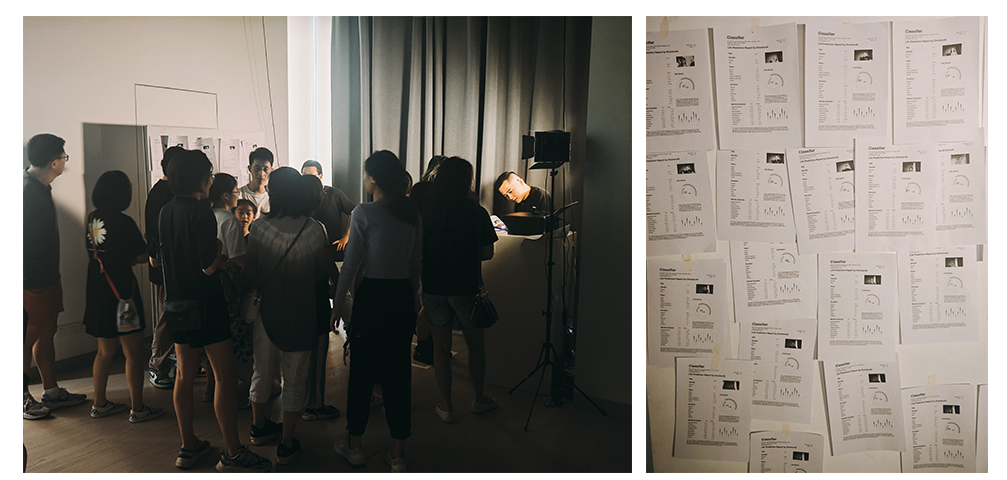
(left) Show visitors lined up to experience Suirun Zhao’s “CLASSIFIER”, an interactive installation that aims to provoke critical reflection on facial emotion recognition systems. (right) Visual print outs of individual user ratings resulting from use of the “CLASSIFIER”.
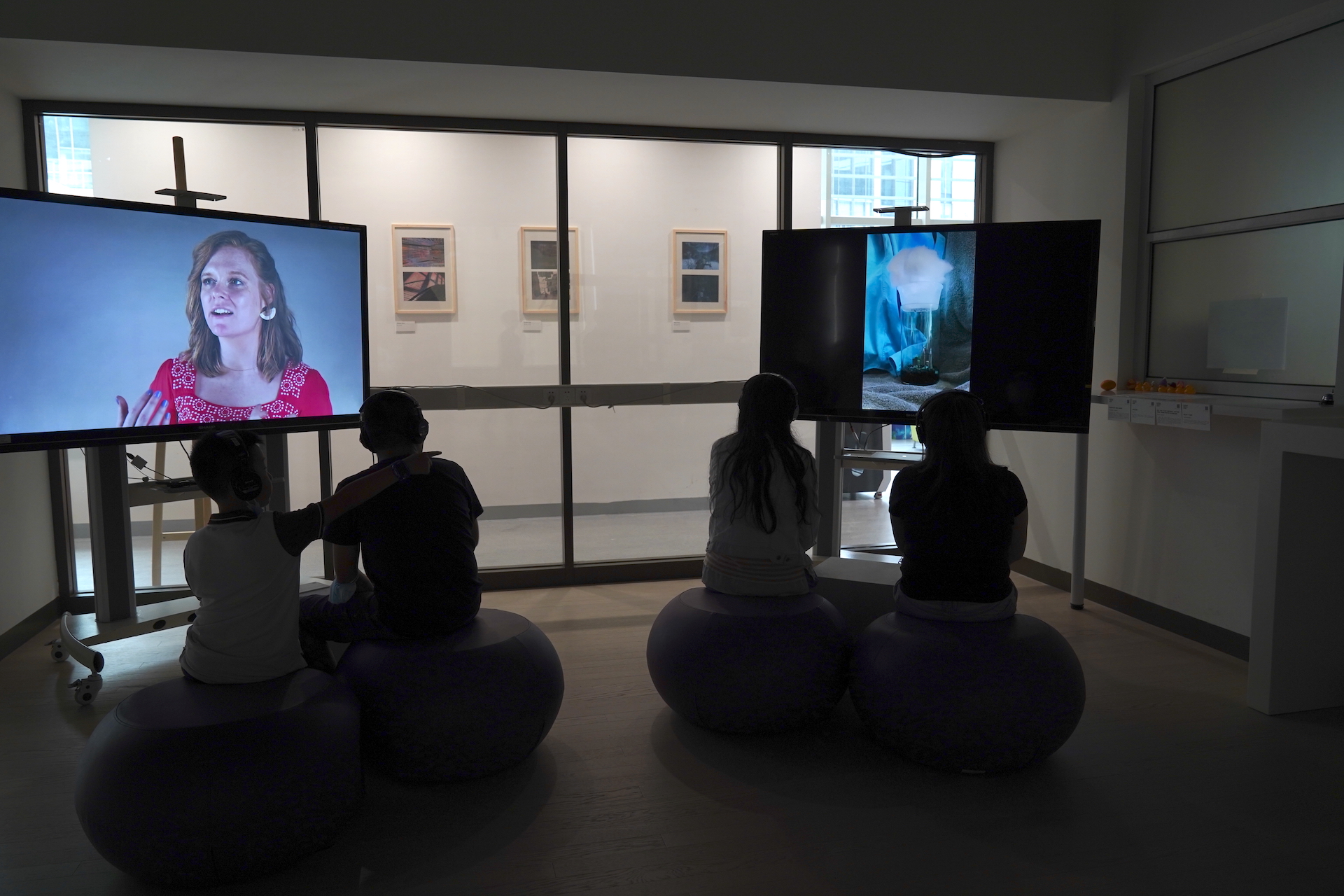
(left) Nicole Padilla’s “Haptic Memory”, an immersive storytelling experience that explores the psychosomatic impacts of our memories, combining first-person audio narratives with haptic reactions within a wearable device. (right) Suri Li’s “SEATIZEN”, an installation inspired by climate change.

(left) Zaida Aleman’s “SALSA Y CAFE”, an experiential project exploring the connection between digital and physical media and how to engage people in something through a comforting and relaxed environment. (right) Anney Norton’s community-based website project: “Self Talk to Self Confidence: Inspiring Women Through Positive Affirmations.”
IMA Low Res graduates who participated in the group show:
Zaida Aleman, Sehmon Burnam, Yiyang Cao, Yueqing Dai, Noah Dixon, Dora Do, Elizabeth Engelman, Chelsea Heard, Yinyi Hu, Ada Huang, Yunshan Jiang, Suri Li, Renton Ling, Daisy Lu, Yuqian Ma, Jamie McCoy, Anney Norton, Nicole Padilla, Zoe-Alanah Robert, Jun Shu, Jason Snell, Wentao Wang, Ai Xia, Suirun Zhao
Photo Credits:
Zhuo Cheng, Phil Guo, Renton Ling, NYUSH Communications
Special Thanks for Additional Support:
Jaye TC Cho, Samantha Cui, Brian Ho, Ruta Kruliauskaite, Sylvia Lee, Craig Protzel, Tian Qin, Steve Sun, Nuntinee Tansrisakul, Danni Wang, Kevin Xu, Sonny Yan, Jesse Yu, Yuguang Zhang, Joyce Zheng, Yaoyao Zhuang
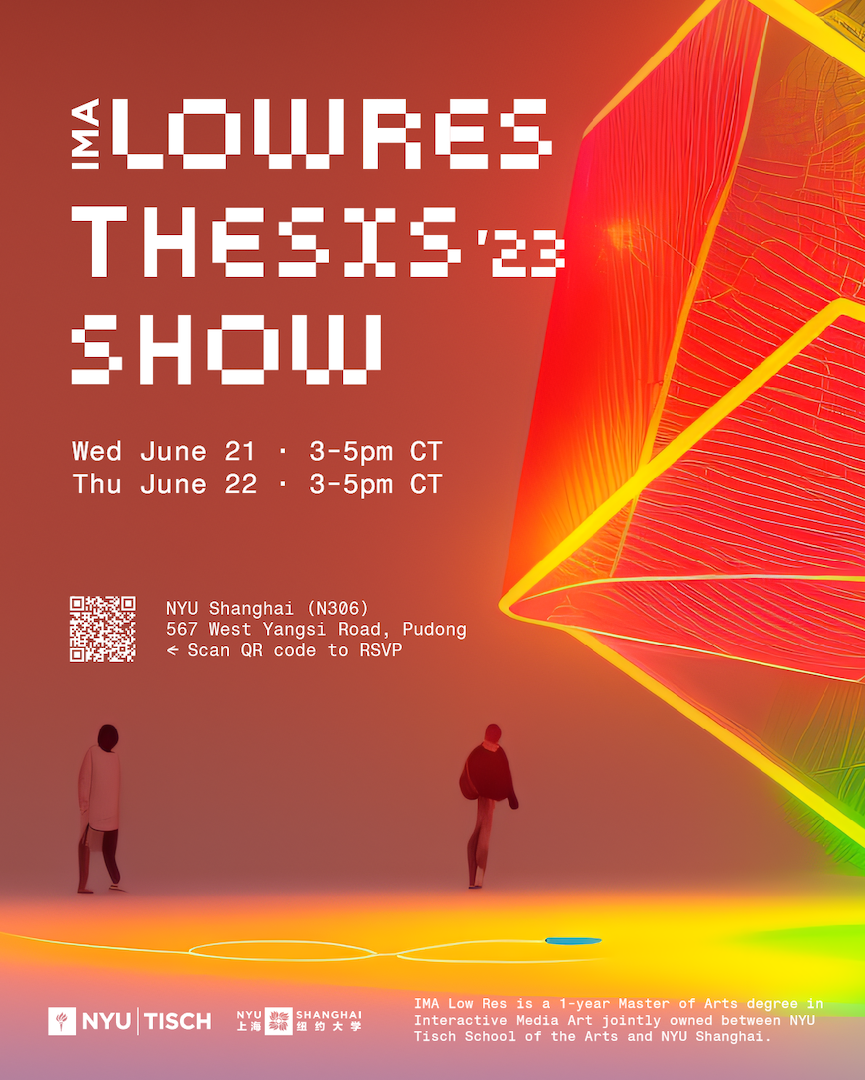
IMA Low Res is a unique one-year graduate school experience in creative and purposeful application of technology that offers three site-specific sessions across New York University’s Global Network in New York, Berlin and Shanghai, interspersed by two semesters of online learning.
For a larger representation of the types of work that happen at IMA Low Res, see the IMA Low Res 2023 thesis project archive.